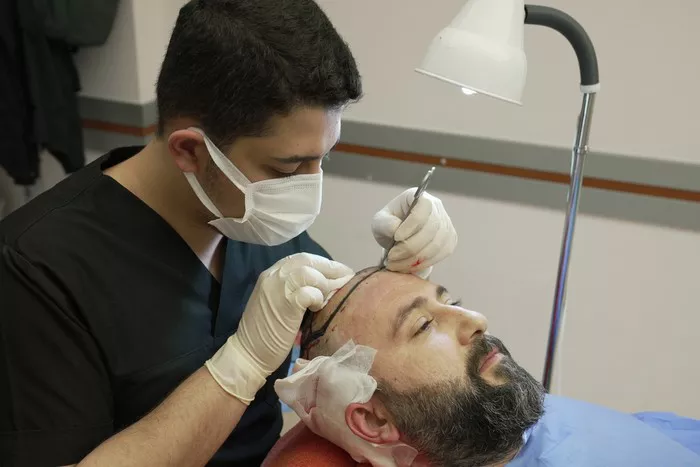Follicular Unit Extraction (FUE) is a popular hair transplant technique known for its minimally invasive nature and quick recovery time. However, the healing process following an FUE hair transplant can vary from person to person. In this article, we explore the timeline and factors influencing the healing process after FUE hair transplant surgery.
1. Immediate Post-Operative Period:
Immediately after FUE hair transplant surgery, patients may experience some mild discomfort, swelling, and redness in the donor and recipient areas. This is normal and typically resolves within a few days. Patients are usually advised to avoid strenuous activities and to rest for the first few days following the procedure to allow for proper healing.
2. First Week:
During the first week post-surgery, patients should follow specific post-operative care instructions provided by their surgeon. This may include gentle cleansing of the scalp with a mild shampoo, avoiding scratching or picking at scabs, and refraining from activities that could disrupt the healing process. It’s essential to keep the scalp clean and dry to prevent infection and promote optimal healing.
3. Two Weeks:
By the end of the second week, most of the swelling and redness in the donor and recipient areas should have subsided. Any scabs or crusts that formed around the transplanted hair follicles will begin to fall off naturally. Patients may still experience some residual tenderness or sensitivity in the scalp, but overall, the healing process should be well underway.
4. One Month:
At around the one-month mark, patients may start to notice initial signs of hair growth in the transplanted areas. While the newly transplanted hair follicles may be visible, it’s essential to be patient, as full results can take several months to manifest. It’s crucial to continue following post-operative care instructions and avoid exposure to direct sunlight, as sunburn can damage the delicate skin of the scalp during this sensitive phase of healing.
5. Three Months:
By three months post-surgery, patients may notice more substantial hair growth in the transplanted areas. The newly transplanted hair follicles will continue to mature and thicken over time, resulting in improved density and coverage. It’s essential to continue practicing good scalp hygiene and avoiding activities that could potentially damage or dislodge the transplanted grafts.
6. Six Months:
At the six-month mark, patients can expect to see significant improvements in the appearance of their hair following FUE hair transplant surgery. The transplanted hair will continue to grow and blend in with the existing hair, resulting in a more natural-looking hairline and overall hair density. While individual results may vary, many patients report feeling more confident and satisfied with their appearance at this stage of the healing process.
7. One Year:
By one year post-surgery, patients can expect to see the full results of their FUE hair transplant. The transplanted hair will have fully matured, and any residual scarring or redness in the donor area should have faded significantly. Patients can enjoy the benefits of thicker, fuller hair that looks and feels completely natural. It’s essential to continue practicing good hair care habits and to follow up with your surgeon as needed to maintain the results of your FUE hair transplant.
Conclusion:
The healing process following FUE hair transplant surgery is a gradual journey that varies from person to person. While most patients experience significant improvements in hair growth and appearance within the first year post-surgery, individual results may vary. By following post-operative care instructions, practicing patience, and maintaining regular follow-up appointments with your surgeon, you can achieve optimal results and enjoy the benefits of a fuller, more youthful-looking head of hair.
Which Country Has The Best Hair Transplant

